- Powering the rebirth
- 1. Renault 4CV/760
- 2. Renault 4CV/750
- 3. Renault Juvaquatre
- 4. Hino 4CV
- 5. Renault 4CV Jolly
- 6. Alpine A106
- 7. Renault Dauphine
- 8. Renault Dauphinoise
- 9. Alpine A108
- 10. Renault Floride/Caravelle
- 11. Renault Dauphine Gordini
- 12. Dauphine Alfa Romeo
- 13. Renault Estafette
- 14. IKA Dauphine
- 15. Renault Ondine
- 16. Renault Alouette
- 19. Hino Contessa
- 20. Renault Dauphine 1093
- 21. Willys Interlagos
- 22. Renault Teimoso
- 23. Renault 4 Plein Air
- 25. Renault Rodeo

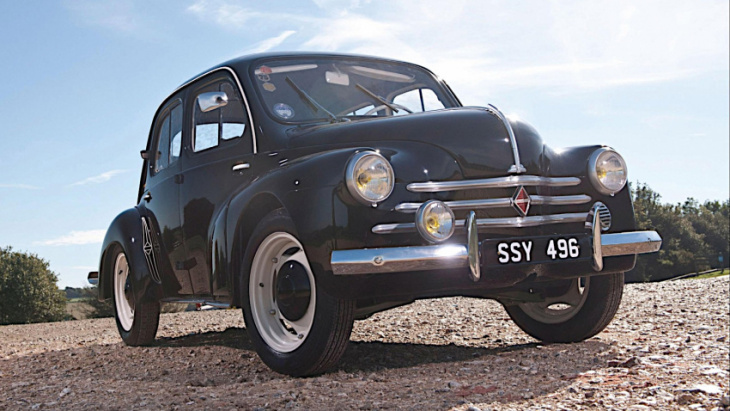


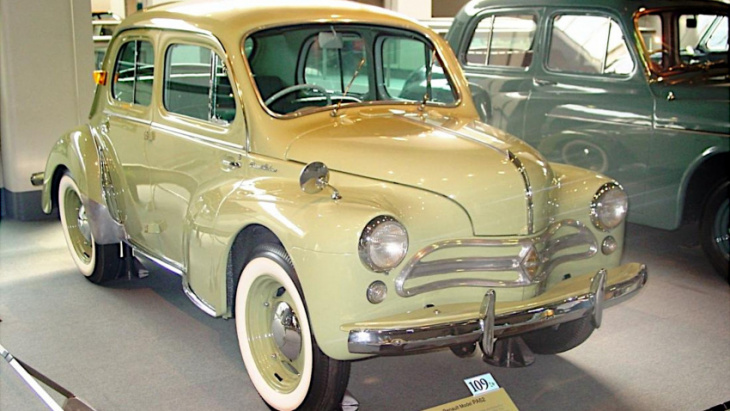
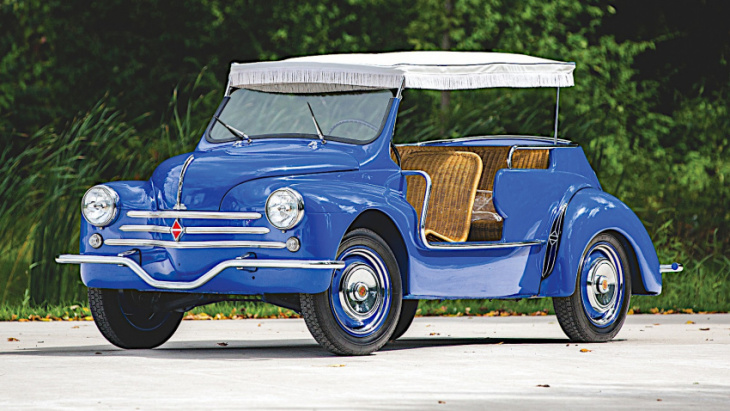
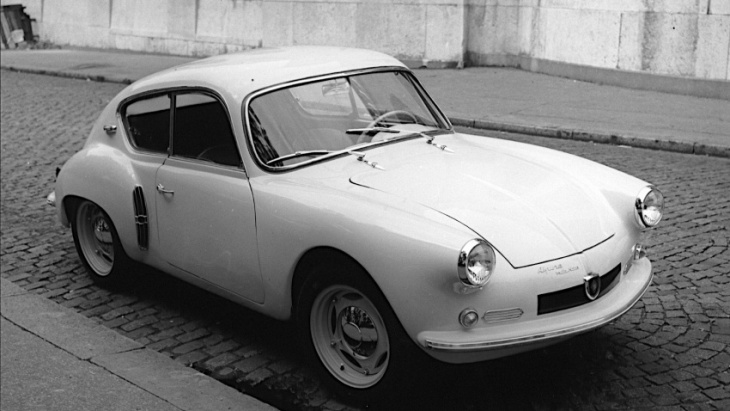
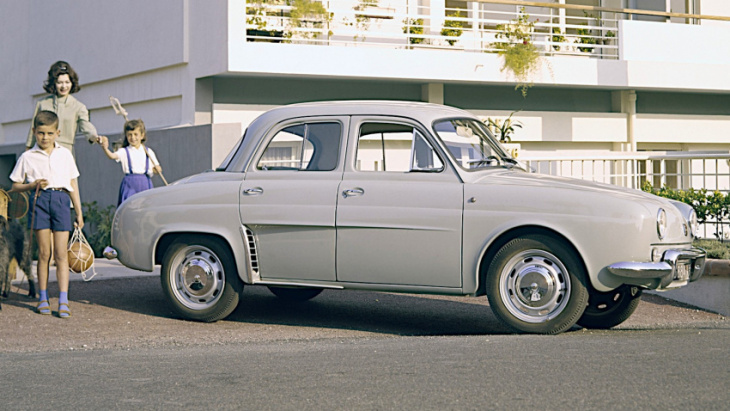

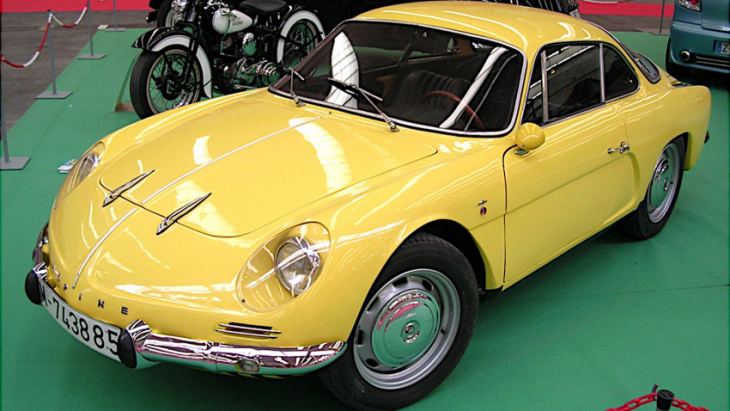

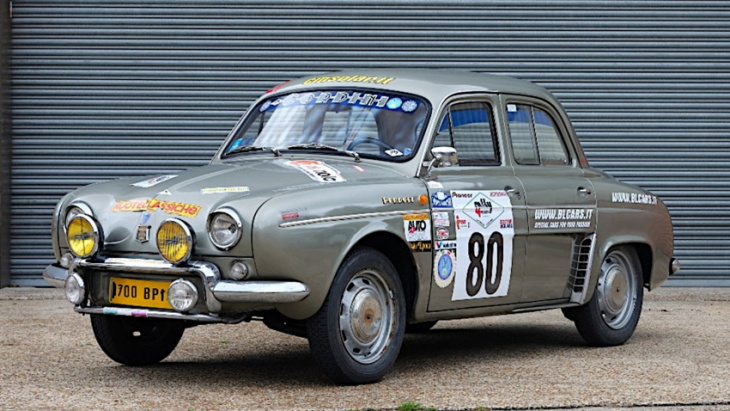

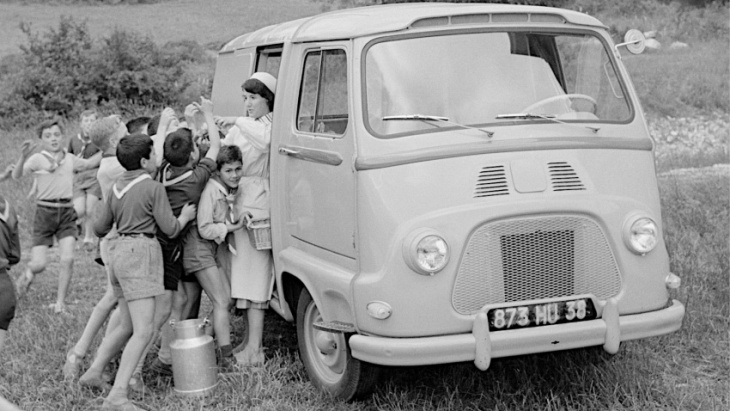
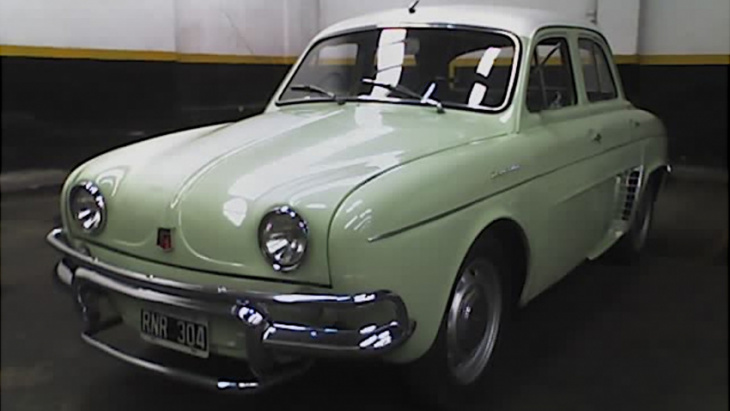
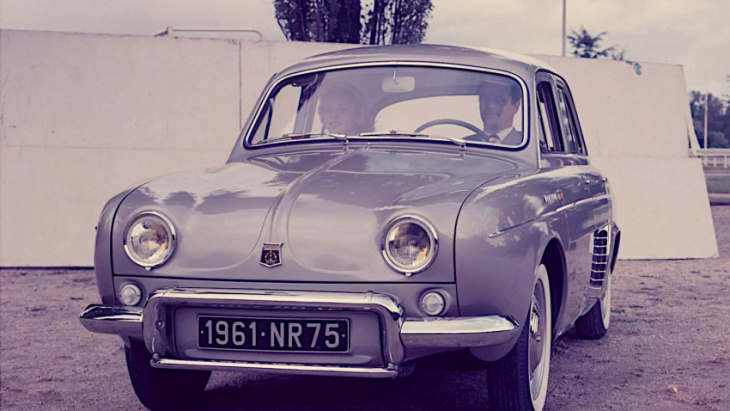
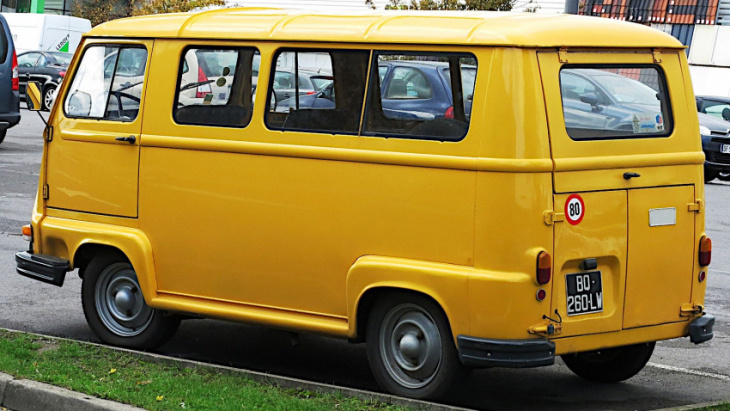
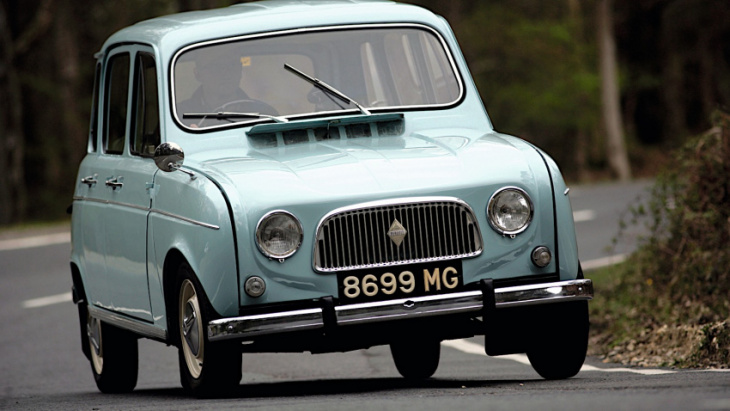
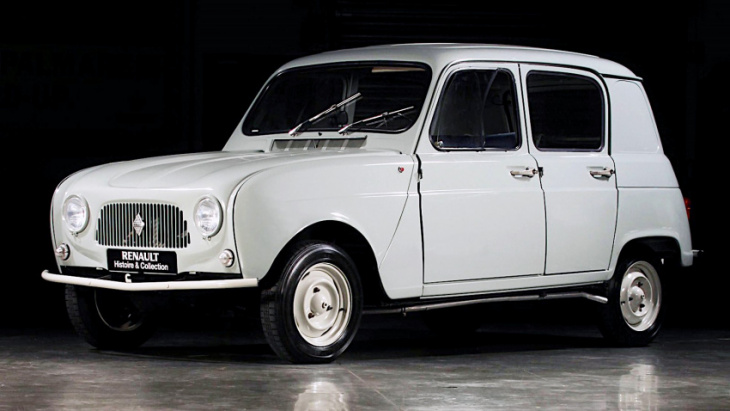
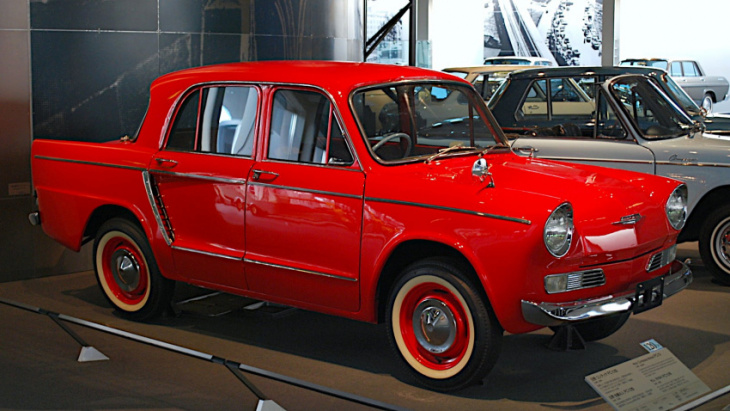
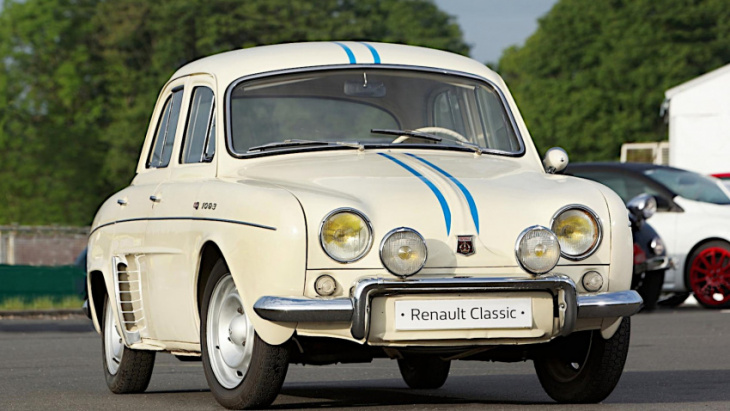
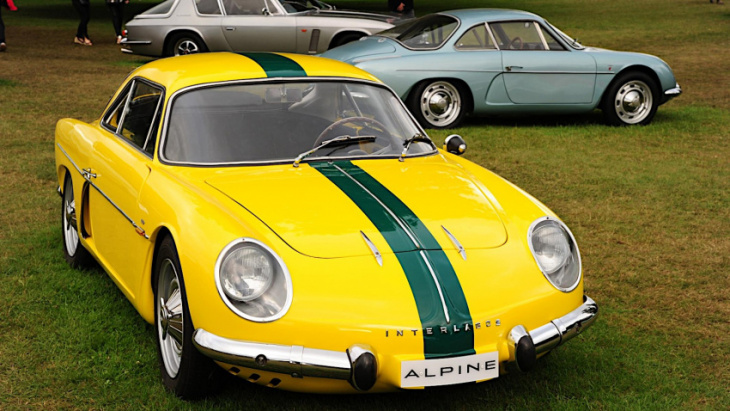
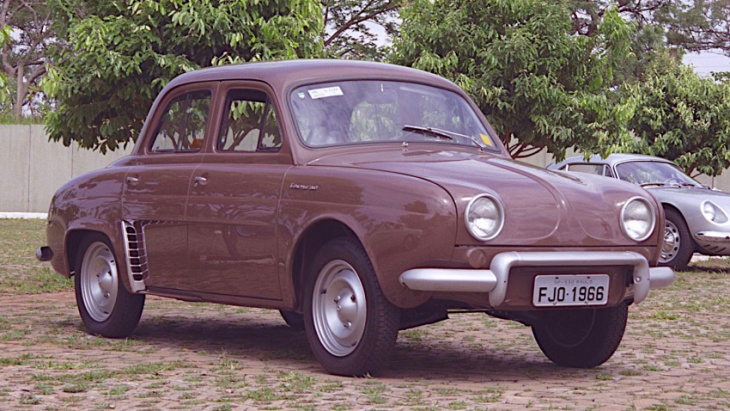
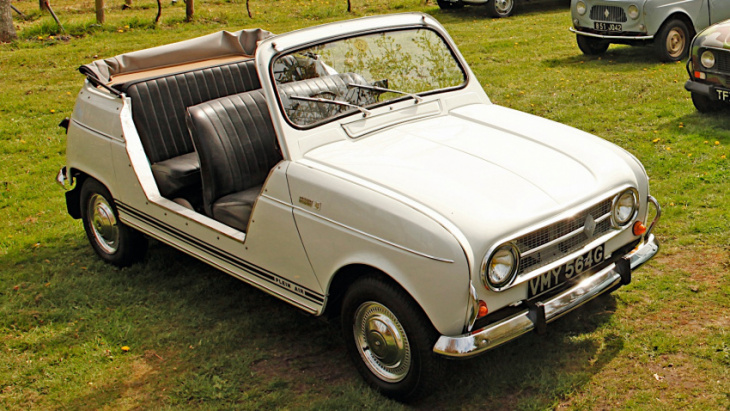
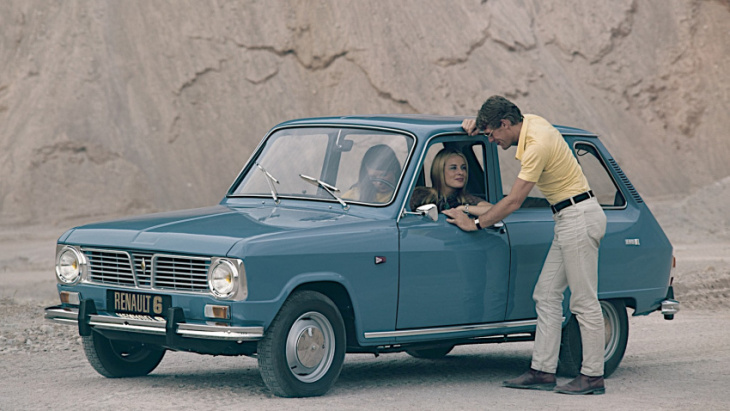
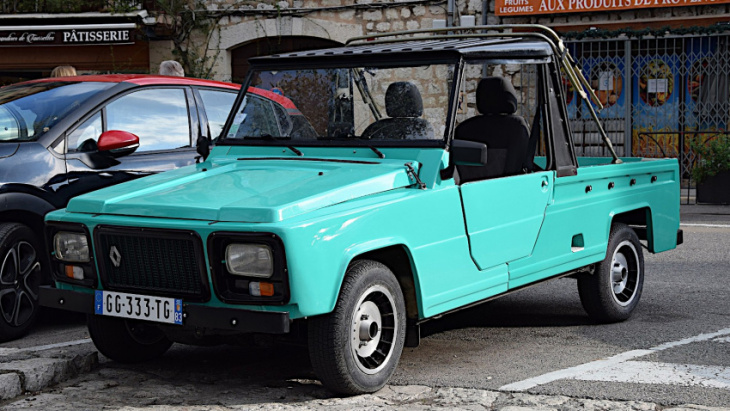

Powering the rebirth
Renault after the Second World War was a very different company from Renault before.
Previously a manufacturer of luxury and high-performance cars, the now nationalised firm suddenly had to appeal to the mass market.
Part of this process involved designing a new engine. Named after the part of Paris where Renault built its first factory and still has its headquarters, the Billancourt was a big success, powering small cars and commercial vehicles from the 1940s to the 1980s.
Here we track its history by looking at the many cars it was fitted to, listed in order of the years they were launched.
1. Renault 4CV/760
“After the war,” said company founder Louis Renault as human society descended into chaos, “France will be poor. We must build a small car that sells at a low price and is cheap on petrol.”
That car, which Renault did not live to see go into production, was the 4CV, sold in the UK as the 760.
Introduced in 1947, it was the first car fitted with the Billancourt engine, which at this stage had a capacity of 760cc. Other sizes would become available in the following years.
2. Renault 4CV/750
The first change to the Billancourt engine happened in 1950.
The 4CV was immediately popular among private buyers, and more enthusiastic drivers soon realised it had a lot of competition potential.
Unfortunately, many motorsport events had a class for cars with engines of up to 750cc. At 760cc, the 4CV didn’t qualify for it, and had to compete against more powerful opposition in the next class up.
Renault responded by slightly narrowing the cylinder bore and reducing the capacity to 747cc. In the UK, the car was renamed 750.
3. Renault Juvaquatre
Perhaps the most curious event in the Billancourt’s history was its application in a car that had first gone on sale before the Second World War.
The Juvaquatre was a small vehicle launched in 1937 with a front-mounted 1.0-litre sidevalve engine and available in a wide variety of body styles suitable for either private or commercial use.
Most of these became obsolete when the 4CV came along, but the more modern rear-engined car wasn’t suitable for conversion into either an estate or a van, so the Juvaquatre was kept in production in those forms.
In 1952, Renault replaced the old engine with the 747cc Billancourt, which it was by now manufacturing in large numbers. Another development – and a change of name – would follow four years later.
4. Hino 4CV
Originally (and still today) a manufacturer of commercial vehicles, Hino began its short career in the car business by launching its own version of the 4CV, built under licence in Japan, in 1953.
Hino’s rate of production was far below Renault’s, but the completion of the 10,000th Japanese 4CV less than three years after that of the first was still a cause for celebration.
5. Renault 4CV Jolly
The Jolly was perhaps the strangest 4CV of all.
Like its companions based on the Fiat 500 and 600, it was a beach car created by Turin coachbuilder Ghia, which chopped off the roof, fitted a non-structural fabric replacement and replaced the standard seats with ones made of wicker.
Only 50 Jollys are believed to have been built – a tiny fraction the 4CV’s total production figure, which exceeded 1.1 million.
6. Alpine A106
Dieppe Renault dealer Jean Rédélé was one of many people who competed successfully in a 4CV following the capacity reduction to 747cc.
Unlike his contemporaries, he went a step further and used the little saloon as the basis for the first in a series of glassfibre-bodied coupés.
The A106 was the first model produced by Rédélé’s Alpine company. It was used mostly for motorsport from 1955, but became available to the wider public two years later.
7. Renault Dauphine
The 4CV was gradually replaced by the Dauphine, which was introduced in 1956.
As we’ll see, the Dauphine was produced in many forms. Nearly all of them were powered by the Billancourt engine, with the exception of a short-lived US derivative called the Henney Kilowatt, which had an electric motor.
Having lowered the Billancourt’s capacity by reducing its bore for the 4CV, Renault now went in the opposite direction. In the Dauphine, the engine measured 845cc, a figure later exceeded by other manufacturers but not by Renault itself.
8. Renault Dauphinoise
The final chapter in the history of the Juvaquatre began in 1956.
As we’ve seen, that car (now available only as a van or an estate) had been using the 747cc Billancourt for four years. Renault now replaced this with the 845cc version which had just become available in the Dauphine.
At this point the Juvaquatre became known as the Dauphinoise. It remained in production until 1960, shortly before the launch of the more practical Renault 4.
9. Alpine A108
Alpine’s second model, which did not fully replace the A106 for several years, was the A108.
It first appeared in 1958, comfortably late enough to be fitted from the start with the 845cc Billancourt.
Unlike Renault, Alpine increased the engine’s capacity for its own purposes, first to 904cc. A 998cc version was homologated for international motorsport in August 1961.
This was the last Alpine powered by the Billancourt engine. Its successor, the A110, was available initially with the more modern Cléon-Fonte, and later with the much larger Cléon-Alu.
10. Renault Floride/Caravelle
Depending on which market it was being sold in, one or other of the above names was used for a very pretty sports car based on the Dauphine.
Naturally, it was fitted at first with the 845cc Billancourt engine – the most obvious choice for a small Renault launched in 1958.
Four years later, it became the oldest model to switch from the Billancourt to the new and more powerful Cléon-Fonte unit.
11. Renault Dauphine Gordini
Following initial discussions in 1956, Renault signed an agreement the following January with engine tuner and race car builder Amedée Gordini.
If Gordini could increase the power of the Dauphine’s Billancourt engine by around 8bhp and add a fourth ratio to the gearbox at a cost of no more than 100,000 francs per car, Renault would authorise him to produce a series of converted cars.
Using borrowed money, Gordini created such a successful prototype that Renault upped its offer. The production car, which went on sale in the spring of 1958, would be manufactured by Renault itself, and Gordini would be contracted to do more engineering work for the larger company.
Now financially secure, Gordini let his imagination run riot. At one point he envisaged combining two Billancourt engines into a 1.7-litre V8, but unfortunately this never happened.
12. Dauphine Alfa Romeo
In October 1958, Renault and Alfa Romeo signed an agreement that selected dealerships representing each manufacturer would sell the other’s cars in their home country.
The same deal also allowed Alfa to manufacture the Dauphine at its Pomigliano d’Arco factory in Naples, the current home of the Tonale SUV.
Officially named Dauphine Alfa Romeo rather than the other way round, this model was very slightly different from Renault’s version, but in all important respects it was a straightforward Dauphine fitted with the usual 845cc Billancourt.
The co-operation with Alfa lasted long enough for the Italians also to build its own version of the Dauphine-derived Ondine (pictured), which we’ll be dealing with soon.
13. Renault Estafette
The Estafette van was a very common sight on French roads from its launch in 1959 until long after it was discontinued in 1980.
Although this was of almost no concern to its many owners, the Estafette was also an oddity, being the first Billancourt-powered model – and indeed the first Renault of any kind – to have a front-mounted engine driving the front wheels.
Only the earliest examples are part of the Billancourt story. In 1962, Renault began fitting the Cléon-Fonte engine, as it did around the same time to the Floride/Caravelle.
14. IKA Dauphine
Industrias Kaiser Argentina was one of several non-French companies which built the Dauphine under licence in their own countries.
The IKA Dauphine was launched in 1960, and was identical to the Renault version in nearly every way.
One minor, but immediately obvious, difference was that the IKA car had significantly more elaborate bumpers at the front and rear.
15. Renault Ondine
1961 was a figuratively explosive year for the Billancourt, which became available in new or updated cars at an average rate of nearly one every two months.
One of these was the Ondine, an upmarket version of the Dauphine. The engine was unchanged, but in this case it drove the rear wheels through a four- rather than three-speed gearbox.
The new ‘luxury’ was achieved by a smarter interior, adjustable seats, chrome trims and, if you were prepared to pay extra for it, metallic paint.
Renault hoped the Ondine would do well in North America, where customers were just starting to realise they were no longer interested in Dauphines of any kind. Production lasted for only two years.
16. Renault Alouette
The Estafette van came in many forms, and retained its usual name in nearly all of them.
The exception was the campervan version, capable of seating up to eight people, which was known as the Alouette (the French word for ‘lark’).
It was introduced in 1961, just early enough for the first examples to be fitted with the Billancourt engine before the arrival of the Cléon-Fonte the following year.
17. Renault 4
The 4 was the car that saved Renault after the collapse of Dauphine sales in North America and the resulting catastrophic drop in income.
It was the company’s first front-wheel-drive passenger car, and the second vehicle of any kind with that layout after the Estafette.
Under the bonnet was the 747cc version of the Billancourt engine as used in the 4CV, which was withdrawn from sale at the same time.
The 4 was not the last car to be launched with the Billancourt powerplant, but it continued to use it for longer than any other. The Cléon-Fonte was not introduced to the range until 1978, and did not become the only choice until the next decade.
18. Renault 3
The little-known 3 was developed on the assumption that if there was a market for the already spartan 4 (which there was), an even more basic and less powerful alternative would also appeal to a significant number of buyers (which it didn’t).
During its very short production life, the 3 was fitted with the smallest Billancourt engine Renault ever made.
A reduction in bore size brought the capacity down to 603cc, which put the 3 into a lower taxation class than the 4. Even this didn’t help.
19. Hino Contessa
Unlike its earlier 4CV, the first-generation Contessa was a car of Hino’s own design, available as either a saloon or a very attractive coupé styled by Michelotti.
The mechanicals were taken from the 4CV, though, but with one important exception.
Hino had gone its own way with the development of the Billancourt, raising its capacity to 893cc. This was still 105cc less than the largest unit fitted to the Alpine A108, but 48cc greater than any version fitted to a Renault-badged car.
The same engine was also used in a pick-up truck derived from the Contessa, known as the Briska.
20. Renault Dauphine 1093
The Dauphine Gordini quickly proved to be not only an impressively fast road car for its time, but also a very successful competition car.
In 1958 alone, an example crewed by Guy Monraisse and Jacques Feret became the smallest-engined car to win the Rallye Monte-Carlo (a record broken four years later by Erik Carlsson’s 841cc Saab 96) and took victory in the Tour de Corse ahead of three others that November.
Early in the following decade, Renault developed an even more potent version called the Dauphine 1093. The Billancourt engine still measured 845cc, but now produced more power than ever at 55bhp.
Just over 2000 were built in 1962 and 1963. The standard colour scheme was white with two thin blue stripes running from front to back, the reverse of the one which later became common for Gordini models.
21. Willys Interlagos
Willys-Overland began building the Dauphine under licence in Brazil shortly after it was launched in France.
A similar deal was reached to build the Alpine A108 from 1962. In this case, the name was changed to Willys Interlagos, a reference to the race circuit in São Paulo.
This Billancourt-powered machine is credited with being Brazil’s first sports car. It’s also famous for being one of the cars raced by future Formula One World Champion Emerson Fittipaldi in the early stages of his career.
22. Renault Teimoso
The Teimoso (the Portuguese word for ‘stubborn’) was a derivative of the Dauphine built in Brazil by Willys-Overland from late 1964.
The 845cc Billancourt was unaltered, but the rest of the car was made as cheap and simple as possible in response to the Brazilian government’s attempts to keep the motor industry going during a period of financial crisis.
The Teimoso had no exterior chrome, a very spartan interior and just about the most basic seats possible. Appropriately for a very non-flashy car, the only available paint colours were black, grey and brown.
As well as costing very little to buy, the Teimoso was also cheaper to run than the regular Dauphine, since it was lighter and therefore more economical.
23. Renault 4 Plein Air
The Plein Air (‘open air’) was a beach car similar in concept to the 4CV Jolly, though it was developed by Sinpar rather than Ghia.
Like all 4s of the time, it was powered by the Billancourt engine, but like the 3 it also proved to be very unpopular in a market dominated by the Citroën Méhari. Production began in May 1968 and ended less than two years later.
Nearly half a century after that, in 2019, Renault revealed a similar-looking concept called the e-Plein Air. Naturally, this didn’t have a Billancourt engine, or indeed any internal combustion engine at all. Instead, like a great many concept cars these days, it was fitted with an electric motor.
24. Renault 6
By 1968, the Billancourt had become an unlikely engine to be fitted to a brand-new model.
Nevertheless, Renault chose it for the 6, a car intended to attract people who liked the 4 but could afford something more upmarket.
The problem was that the 6 was larger and heavier than the 4, and the Billancourt struggled to push it along at more than a very moderate pace.
Two years into the car’s 18-year production life, Renault bowed to the inevitable and fitted the 6 with the more powerful Cléon-Fonte engine, which is what it should have had in the first place.
25. Renault Rodeo
In the same year that the 4 Plein Air was discontinued, Renault brought out a similar open-topped utilitarian model which lasted for much longer.
The Rodeo was based on the platform of the 4 but had an unrecognisably different body.
From its launch in 1970, it was powered by the 845cc Billancourt and known as the Rodeo 4. The Rodeo 6, fitted with the 1108cc Cléon-Fonte, came along two years later, a long time before that engine was first used in the regular 4.
Both models remained in production until 1981.
26. Renault 5
If fitting the Billancourt to a new car had been a strange move in 1968, it was even less believable when the 5 was launched four years later.
At least this time it wasn’t the only choice. The most basic 5s used the Billancourt first in 782cc and later in 845cc form, but all the others in the first generation – even the 5 Turbo homologation special – had the Cléon-Fonte.
The 5 was the last new model fitted with the Billancourt. Production of the old unit came to an end in the mid-1980s when it was finally phased out of the 4 range.
Keyword: 26 cars with Renault’s Billancourt engine
